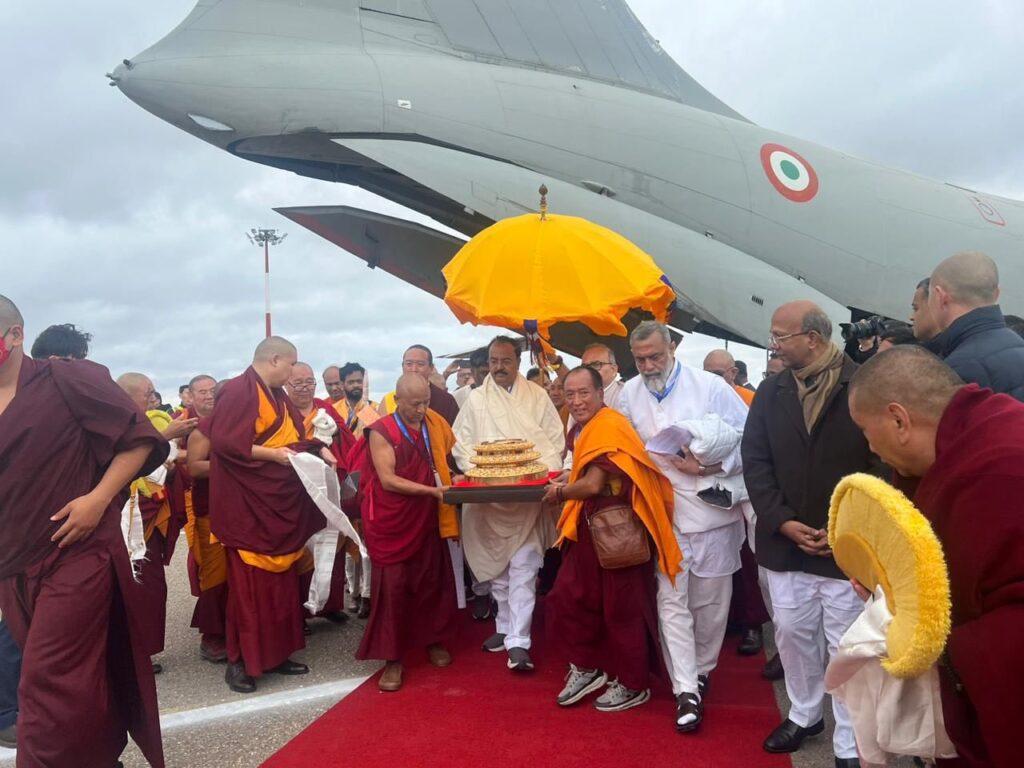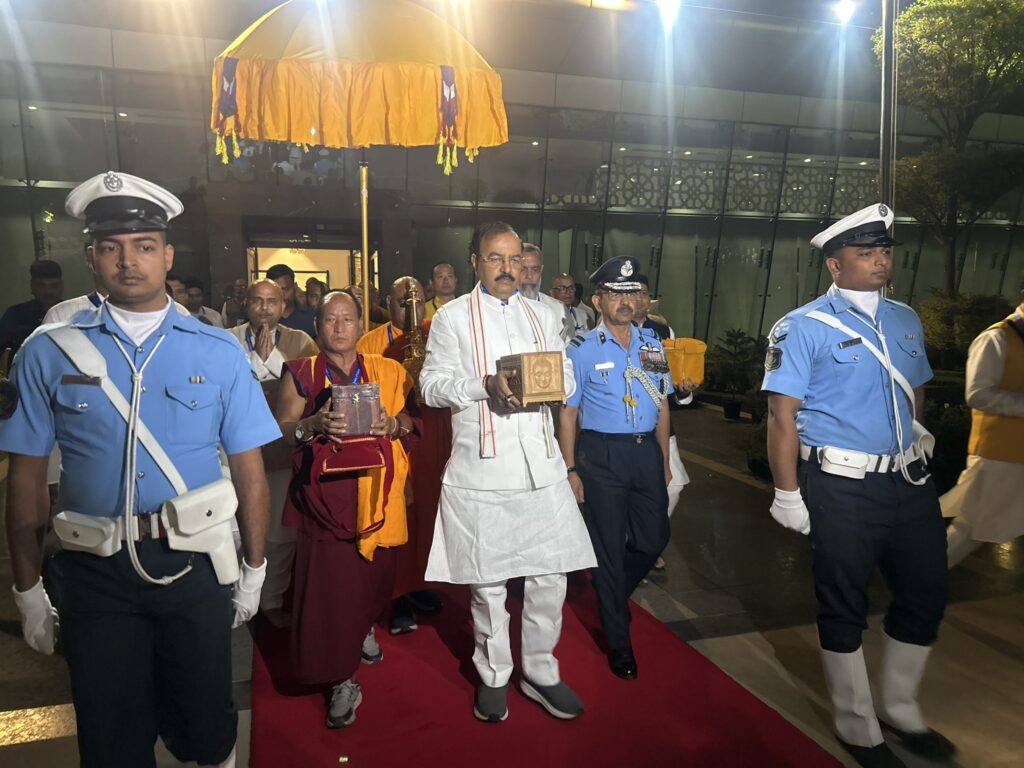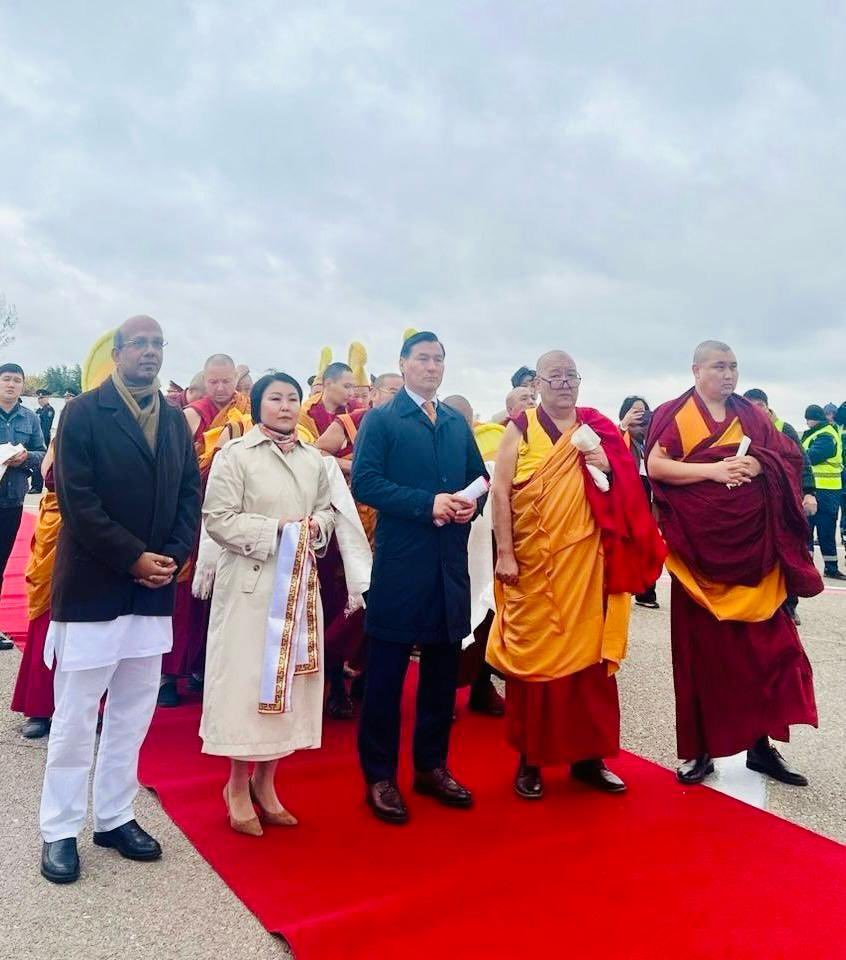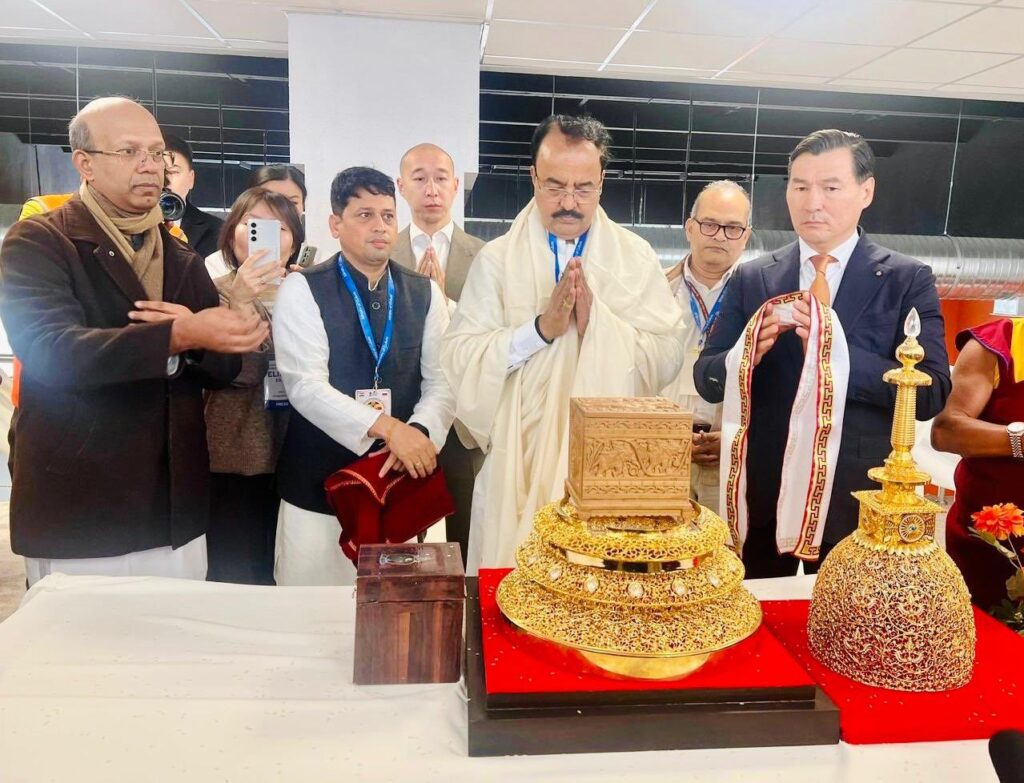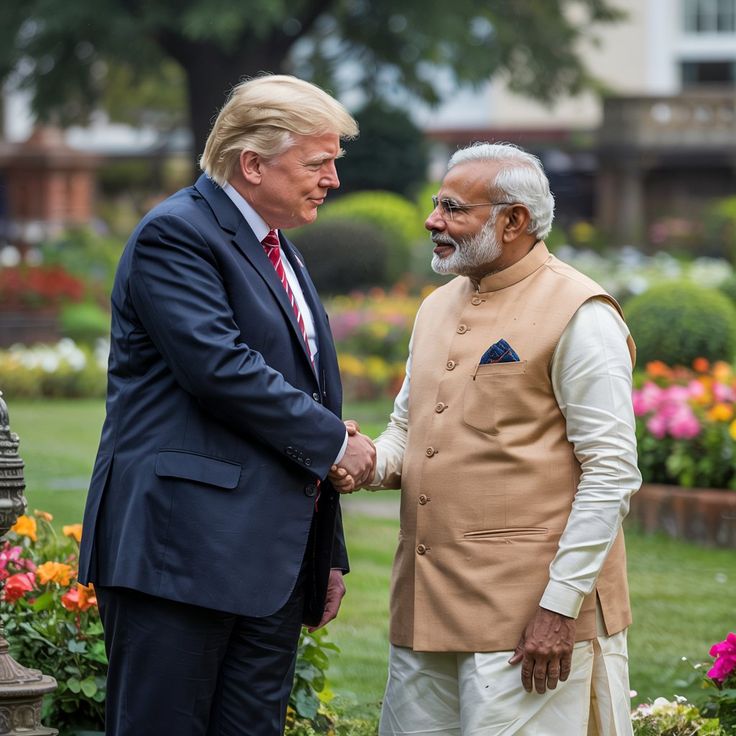New Delhi / Elista, October 2025 — In a landmark event underscoring India’s deep-rooted spiritual heritage and its expanding role in cultural diplomacy, the holy relics of Lord Buddha preserved at the National Museum in New Delhi have been sent to the Russian Republic of Kalmykia for the first-ever exposition of their kind. This momentous occasion, scheduled from October 11–18, marks a significant moment not only for India’s Buddhist community, but also for global interfaith understanding.
What Is Being Shown: The Relics and Their Significance
The relics in question are known as the Piprahwa or Kapilavastu relics, archaeologically linked to the Buddha Shakyamuni. Discovered in 1898 at Piprahwa (in today’s Siddharthnagar district, Uttar Pradesh), these remains have been a subject of reverence for Buddhists, scholars, and historians alike.
After being under British colonial custody and through years of negotiation and repatriation efforts, the relics were officially returned to India earlier in 2025—ending a 127-year gap. Prime Minister Narendra Modi described their return as “a powerful symbol of India’s ancient heritage and spiritual legacy.”
The relics are currently enshrined in the Buddhist Gallery of the National Museum, New Delhi. For this mission, they are being transported with full religious protocol. Senior Indian monks will escort them, and great emphasis is being placed on reverence, sanctity, and ritual observance.
Where and When: Kalmykia’s Exposition Details
The sacred relics will be on display from October 11 to 18 in Elista, the capital of the Kalmykia Republic in South-West Russia. The venue is the Geden Sheddup Choikorling Monastery, also known as the Golden Abode of Shakyamuni Buddha, one of the most significant Tibetan Buddhist centers in Kalmykia.
This is the first time the relics have been exhibited in this Russian Republic, which is noted for being home to Europe’s only Buddhist-majority area. The local population’s strong Buddhist roots make this event especially meaningful for devotees in the region.
Who Is Leading and Attending
The Indian delegation is being led by Keshav Prasad Maurya, Deputy Chief Minister of Uttar Pradesh. Accompanying him are senior monks, spiritual leaders, and representatives of multiple Buddhist orders. The delegation includes, among others, His Holiness the 43rd Sakya Trizin Rinpoche (head of the Sakya order), the 13th Kundeling Taktsak Rinpoche, and the 7th Yongzin Ling Rinp Rinpoche.
Receiver side dignitaries in Kalmykia include Batu Sergeyevich Khasikov, Head of the Republic of Kalmykia; Shajin Lama of Kalmykia; Geshe Tenzin Choidak and other senior members of the Buddhist Sangha. Local devotees and community leaders will also participate in religious services, blessings, and academic programs tied to the event.
Program Highlights: Beyond the Exposition
While the relics themselves are the centerpiece, a series of associated events has been organized around the exposition to enrich the spiritual, academic, and diplomatic impact of the visit:
Religious ceremonies and blessings by senior monks, aimed at enabling devotees to venerate the relics.
Academic lectures and discourses on Buddhism in the modern world, its history, and its relevance in the 21st century.
Presentations of sacred texts and manuscripts. One key component is the presentation of the Kanjur, a set of 108 Mongolian religious texts originally translated from Tibetan, which will be donated by the International Buddhist Confederation.
Cultural exchange programs and interfaith dialogue, embracing India and Kalmykia’s shared Buddhist heritage.
Historical, Cultural, and Diplomatic Context
This event unfolds against a backdrop of several interrelated developments:
1. Repatriation of the Piprahwa relics
The relics, discovered in 1898, had gradually been dispersed or held overseas. Their return to India earlier in 2025 after more than a century was the culmination of long-standing diplomatic, cultural, and legal efforts.
2. India’s increased cultural diplomacy via Buddhist heritage
India has, in recent years, used its Buddhist heritage as a bridge for international soft power and spiritual diplomacy. Exchanges of relics, involvement in Buddhist centres abroad, international forums, and cooperation with Buddhist-majority or Buddhist-tradition countries are part of this strategy.
3. Kalmykia’s place in the Buddhist world
The Republic of Kalmykia holds a unique status: it is Europe’s only region with a substantial Buddhist population, with Tibetan Buddhism being central to its spiritual culture. The Geden Sheddup Choikorling Monastery (Golden Abode of Shakyamuni Buddha) is both a pilgrimage centre and cultural landmark.
4. Growing India-Russia cultural ties
While geopolitical and economic ties between India and Russia are well-noted, this event adds a layer of spiritual, cultural, and people-to-people interaction. As Kalmykia requested the relics, Indian authorities acceded, reinforcing mutual respect in religious and cultural spheres.
Significance for Devotees, Scholars, and the Global Community
Devotional uplift: For Buddhists in Kalmykia and nearby regions, the relics provide a rare opportunity for direct veneration, fostering spiritual solace and connection.
Academic interest: Scholars of Buddhism, archaeology, history, and religious studies view the exposition as an occasion to revisit the relics’ provenance, their preservation, and their impact on collective memory.
Interfaith and intercultural dialogue: In an era marked by religious polarization, such expositions help to remind people of shared roots, mutual respect, and collective heritage.
Soft diplomacy: For India, the event aligns with its efforts to project cultural leadership, not just economic or strategic influence. It stands as a gesture of goodwill, underscoring India’s heritage as a bedrock for universal values such as peace, compassion, and non-violence.
Logistical and Ceremonial Considerations
Transporting centuries-old relics with religious sanctity and preserving their integrity required careful planning:
The relics will be transported via a special Indian Air Force aircraft, under stringent security and ceremonial protocols.
A ceremony—a puja—will be held at the National Museum, followed by departure preparations under full ritual observance.
On arrival in Elista, they will be received by religious and civil dignitaries and enshrined for worship in the Golden Abode monastery.
Reactions and Reflections
From across the religious, political, and cultural spectrum, responses have been overwhelmingly positive.
Indian leadership sees the expo as not just a religious event but also a reaffirmation of India’s civilisational identity. Deputy Chief Minister Maurya expressed deep gratitude for the opportunity and emphasized the spiritual and archaeological importance of the relics.
Kalmyk authorities have welcomed the event as a deeply meaningful gift, both in spiritual and cultural terms. Batu Khasikov, Head of the Republic, remarked that Elista had been honored and that this step aligns with the region’s spiritual identity.
Community and Sangha (monastic) leaders view this as a bridge between communities, an act of healing colonial-era dislocations of sacred artefacts, and an opening for renewed engagement and shared rituals.
Challenges and Considerations
While the event is historic, it does not come without challenges or sensitivities:
Preservation concerns: Relics that old are fragile. Ensuring they are transported, displayed, and handled without harm is essential. Conservation guidelines, climate controls, and retrieval protocols must be strictly followed.
Logistics and delays: The exhibition had to be postponed from initial dates in September to October owing to “unforeseen logistical and technical circumstances.”
Religious sensitivities: Different Buddhist traditions may have varying expectations about relic handling, display, and worship. Harmonizing protocols across communities, ensuring respectful access, and avoiding over-commercialization or politicization will be vital.
Diplomatic balance: While the event strengthens India-Russia ties, it also places India in a position of deep cultural outreach. The optics and outcomes will be watched carefully by other nations with Buddhist connections, especially in Asia.
Broader Impacts and Legacy
This exposition is likely to leave multiple lasting effects:
1. Strengthening of India’s role in Buddhist heritage preservation
India may use this model to further engage with Buddhist communities worldwide—through relic exchanges, cultural centres, heritage parks, and educational collaborations.
2. Increased attention to Kalmykia as a Buddhist spiritual destination
The republic may see greater interest from pilgrims, researchers, and spiritual tourists, enhancing local culture-based economies and global awareness.
3. A renewed narrative of repatriation
In recent years, India has taken initiatives to bring back religious and cultural artefacts dispersed during colonial rule. The Piprahwa relics’ return, followed by their international display, adds momentum to this trend.
4. Interfaith harmony and cultural diplomacy
Events like this, which cross borders and religions while honoring traditions, can serve as reminders that cultural diplomacy is a powerful tool for peace-building.
A Moment of Reflection
As the relics are enshrined in Elista for the coming days, believers, visitors, and leaders will gather, each bringing their own hopes:
For many, this is more than an exhibition—it is an encounter with sacred history, a chance to touch something ancient and to find spiritual meaning in a world constantly changing.
For scholars, it offers fresh perspectives on how relics shape identity, how memory travels, and how the past remains alive in the present.
For diplomats, it stands as a signal: that culture, faith, and heritage still matter deeply, and that international relationships built on respect and shared meaning can be among the strongest.
India’s dispatch of Buddha’s sacred relics to Kalmykia for the first time is an event of profound importance—religiously, culturally, and diplomatically. It is rooted in history, powered by faith, and given meaning by the people who will see, venerate, and interpret these relics in a land far from their place of origin.
As the relics travel from the National Museum in Delhi to the Golden Abode monastery in Elista, the journey is symbolic: a journey of reconciliation and spiritual solidarity; an affirmation that ancient heritage can still serve the living; and a reminder that faith, when shared, becomes a bridge across nations.
For the devotees in Kalmykia, for the monastic leaders, for India, and indeed for the world, these days will likely be remembered as a rare moment when sacred history was in motion—paying homage not only to what was but also to what remains, across borders, in hearts, and in belief.
Related News: Read More

